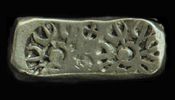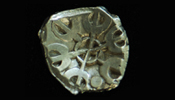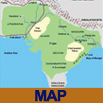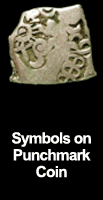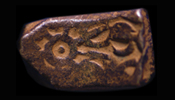|
|
Coins, a piece of metal of defined weight stamped with a symbol of authority for financial transaction. The idea of coinage was conceived by three different civilization most probably simultaneously i.e. Asia minor, India and China in 6th Cent. BC. These coins were made of electrum, a natural alloy of gold and silver. These were crude but with a definite weight stamped with incuse punches issued by authorities.
The first Coins of India were minted just before 5th Cent. BC. These are known as Punchmarked Coins. These coins were punched pieces of silver of specific weight, with various symbols, and uniface with no inscriptions. They were marked with 1 to 5 or more symbols, representing animals, hills, trees, and human figures, issued by royal authority.
There were several small kingdoms in India in 8th � 10th Cent. BC. Each Kingdom had distinct type of silver coins to facilitate the trade. About 600 BC. in north western part of India, Takshasshila or Taxila and Pushkalavati or Peshawar, became important trade centres for Mesopotamia. They issued unique coins, called bent bars (concave bars) of silver, weighing 11 gms, these are also called �Taxila bentbars� or �Satamana bent bar�, representing 100 rattis of silver in weight (Shata means 100, mana means unit). These bars were punched with septa radiate (seven arms) symbols, one at each end. The symbols which are consistent one Sun and six armed wheel, a sign of Surya dynasty (Surya Vamsi).
Broadly Punchmark coins are divided into two groups. The coins with four symbols with a specific weight. This is the period of Jamapadas and Mahajamapadas (small and large states) these later absorbed into Mughda Empire, during Asokas� period. These coins are called Imperial series punchmark coins, weighed 32 rattis and known as Karshapanas. These are pieces of silver metal of different thickness, weighing (50 to 52 grams). Size between 10 mm to 30 mm. thickness from fraction of mm to 2 mm. |
|
|

